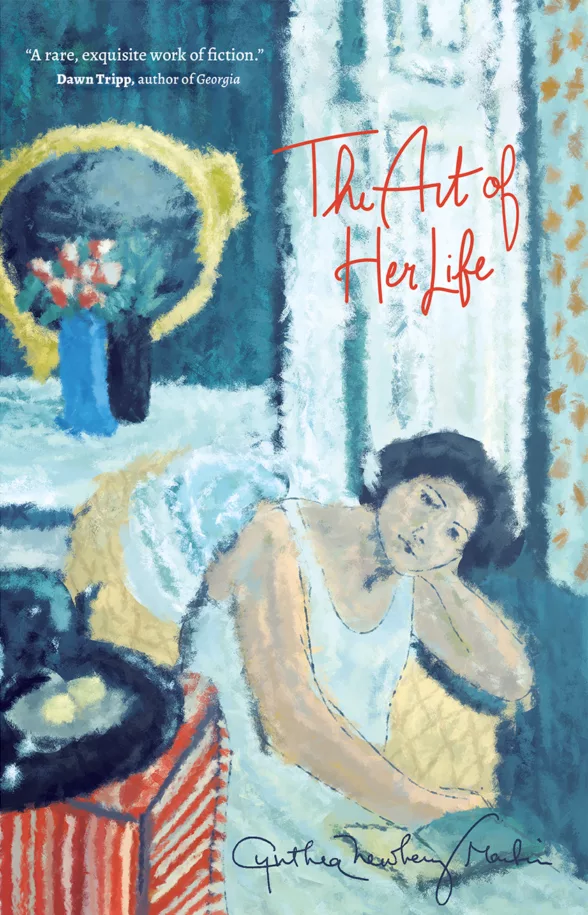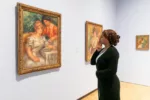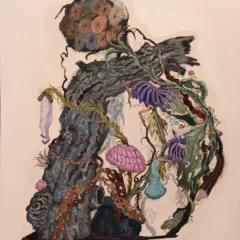“The Art of Her Life” by Cynthia Newberry Martin
Publisher – Fomite Press
2023
What is the function of art? Why do people look at art?
Why do people make art – paint, write, dance, sing – is it to share, love, cry?
In her new novel, “The Art of Her Life” Cynthia Newberry Martin uses painting as a metaphor to express the psychological state and emotions of her protagonist Emily. As a child Emily becomes attached to the painting by Matisse entitled Breakfast (in the collection of the Philadelphia Museum of Art). As the story develops Emily studies painting, absorbs its color, enters its space and incorporates it into her life. She becomes a painter; painting and curating at the local art museum, is her life. Emily then finds out that she has cancer. As her corporal vessel dissolves it rematerializes through art, into the form of the painting Breakfast.
Cynthia (the writer) has fictionalized the perpetual aesthetic dilemma of the art/life link. Can the art be separated from the life?
Emily (the painter) says, “…What I’ve been doing is like seeing myself from the outside. Like seeing myself on canvas.” (page 82)
Matisse (the painter) says, in answer to the question, ‘Why do you paint?’ “…to translate my emotions, the feelings and the reactions of my sensibility through color and drawing…” (page 174 – quoting from an interview with the artist in 1942 – see endnote for more.)
Memory is at the juncture of the art life link.
Memory is how we learn. Memory constructs our reality. Memory is the intangible ephemera of belief.
Mark, Emily’s lover and then husband, is an archeologist – he digs up the past. Emily curates small mementos of joy from her life to create memory chests for her two young daughters. She is constructing a reality of a place and time in which she once existed. A life, like a work of art, however universal, still points to a specific place and time.

The bulk of this novel is devoted to details about memory and dying; death is avoided. Instead we are given snapshots of a life closing in on itself (in the form of paintings – see endnotes). Emily is transformed into “Breakfast;” her death is not written in. How can it be!The novel is written in first person. It is, as Freud wrote, impossible to imagine one’s own death.
In today’s world the random reality of death – of being killed, the ills of pandemic, climate change, political chaos, war – has become normalized. The leisure of being is replaced by uncertainty.
And then there is making art.
On Wednesday, November 1, I had the chance to meet and talk with Cynthia. She talked about her process. How this book took 25 years to develop. About getting published and the community of the small independent press. She read from her book.
Making art – all good stuff.
endnotes
1. In the 1942 radio interview (with Jerome Seckler), when (Matisse) was asked generically “Why do you paint, Mr. Matisse?,” he replied generically, “to translate my emotions, the feelings and reactions of my sensibility through color and drawing … ” More here.
2. Fifty nine art works are mentioned or described in the novel, including three in the collection of the Philadelphia Museum of Art (a primary character in the book among them — Matisse’s “Breakfast.” To more works referenced are in the collection of the Barnes Foundation. Links to the art mentioned or described in “The Art of Her Life.”










